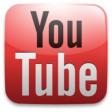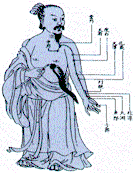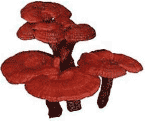
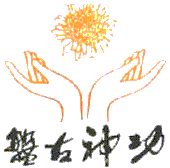


by Heiner Fruehauf, PhD, LAc
|
The latter half of the 19th century and through the end of the 20th century has been a time of great political, economic, cultural, and scientific transformation in China. Chinese medicine, the shining gem of traditional science, has had to endure many assaults in this process, sinking the field into a quagmire where it had to fight bitterly for its own survival. This course of events can be called "The Century When Traditional Chinese Medicine Was Tied up in the Straightjacket of Utter Delusion. -- Li Zhichong, Director of Chinese TCM Association, 2002 This article1 is based on the conviction that the traditional art of Oriental medicine is dying -- both in mainland China, home of the mother trunk of the field, and consequently overseas where branches of the tree are trying to grow. It may be an anachronistic piece, written at a time when TCM administrators around the world are celebrating major advances in the field, such as increasing numbers of students, practitioners, patients, colleges, universities, and hospitals, which all appear to reflect a booming state of Oriental medicine. But if we truly respect our tradition as a living organism and listen intently to the deeper layers of its pulse, it becomes evident that the original vitality of the system is expiring, although its true condition may be obscured by a steroidal glow on the surface. The following is primarily an epitomized narrative of the development of "TCM," the medical system that has monopolized the practice of Oriental medicine in mainland China, and that has come to serve as the main mold for the budding profession of Oriental medicine around the globe. It exposes a system that has been conditioned by a distinctly political agenda, and reveals its logo "TCM" (Traditional Chinese Medicine) as a grave misnomer -- designating a medicine that is not at all aiming to preserve the traditional characteristics of Chinese medicine, but, on the contrary, to expurgate, reform, and control the classical and folkloric texture of the traditional record in the name of progress. Between the lines of this argument resides the warning that the progressive removal of the unique foundations of Chinese medicine is far more than just a philosophical issue. It affects the heart of our medicine itself, namely the nature of the clinical encounter and the quality and the results of therapy. It greatly diminishes, moreover, the unique edge that the traditional science of Chinese medicine has over allopathic medicine and its various offshoots. Mine is thus an urgent call for a reevaluation of the direction and the fundamental convictions that we set for ourselves as individual Oriental medicine practitioners. Otherwise we may become thoroughly entrapped in the spiritless mechanisms of state agencies, insurance companies, and most of all, our modern mind that has been conditioned to fancy the unambiguous, standardized, packaged approach. It is admittedly an opinionated warning, but a sincere and, I believe, reasonably informed one. From both my own perspective and that of my most respected teachers in China (including high ranking administrators within the TCM system), modern TCM in East and West is about to reach the "fall height" of the classical tragedy -- featuring the vainglorious protagonist luxuriating at lofty heights (i.e. mainstream acceptance and doctoral level ratification), while blindly cutting into the life supply line without having a clue of the consequences. 1) First Impact: The Modernization of China During the Late 19th and Early 20th Century The end of dynastic China marked a peak season for Chinese medicine. Although nearly every other aspect of society was in a state of collapse and disarray by the middle of the 19th century, the culture of traditional medicine was alive with the multihued color and texture of a 2,500 year-old art. There was the stimulating discourse between the newly founded fever school and the school of the neo-classicists, there were numerous scholar physicians publishing influential discourses, and there was the arcane realm of esoteric discipleship, alchemical experimentation, and the kaleidoscopic facets of folk wisdom that have always characterized the sensuous heart of the profession. The advent of Western medicine presented the traditional healing tradition with its first major challenge from which it never completely recovered. It lost its rank as the one and only "medicine" (yixue) and became "Chinese medicine" (zhongyi), defined in contrast to "Western medicine" (xiyi). Immediately, however, there developed an early brand of progressive physicians who did not lament this situation, but attempted to integrate some of the paraphernalia of modern medicine into the traditional system. These pioneers are now collectively referred to as the Chinese-Western Integration School (zhong xi huitong pai). Main representatives are Wang Qingren (1768-1831), Tang Zonghai (1851-1908), Zhang Xichun (1860-1933), and Zhang Shouyi (1873-1934). It is important to note that these initial "integrators," often cited by TCM administrators as early visionaries of their own system of integrated medicine, were not proponents of the hierarchical superiority of Western medicine, but rather tried to embody the traditional ideal of the broadly educated master physician. It was their erudite skill level in the art, philosophy, and science of the traditional thought process that allowed them to break new ground by, for instance, categorizing Western drugs in energetic terms, or by relating the Triple Warmer to certain anatomical tissues described by Western medicine. Although it was their declared goal to incorporate some of the useful mechanics (yong) of Western medicine into the traditional mother body (ti) of Chinese medicine, their parameters remained clearly "traditional at the core" -- as the programmatic title of Zhang Xichun's collected writings announces, Chinese at Heart But Western Where Appropriate: Essays Investigating An Integrated Form of Medicine (Yixue Zhong Zhong Can Xi Lu, 1933). This day in which curious Chinese physicians could explore the phenomenon of Western medicine from an equal footing was soon eclipsed by a period characterized by the through-and-through hierarchically structured relationship which still defines the relationship between modern medicine and any traditional system of life science today. During the first half of the 20th century, a variety of events politicized Chinese medicine as the despicable symbol of everything old and backward. It became a pawn that reformers from all political camps sought to abolish. When this endeavor failed due to vehement public protest, the new stewards of state settled for banishing the unruly gargoyle of Chinese medicine into a controlled existence that was subject to not only a rigorous purge of diagnostic methods and therapeutic modalities, but -- most damaging to its integrity as a system in its own right -- the creeping replacement of its essential standards with the "correct" parameters of modern science. The political voice of Sun Yat-sen, the leader of the Republican revolution that toppled the dynastic system in 1911, had been shaped atop the backdrop of his Western science education, and always rumbled with the deep suspicion that its master harbored against the old system of medicine. Later on, Kuomintang public health officials took this personal bias into the legislative arena and presented the radical proposal, "A Case for the Abolishment of Old Medicine to Thoroughly Eliminate Public Health Obstacles" (feizhi jiuyi yi saochu yishi weisheng zhi zhangai an).2 Authored by Yu Ai and Wang Qizhang, the proposition aggressively infers that "the theories of yin and yang, the five elemental phases, the six atmospheric influences, the zang-fu systems, and the acupuncture channels are all illusions that have no basis in reality" and warns that "old medicine is still conning the people with its charlatan, shamanic, and geomancing ways."3 The proposal, containing three major clauses (severely restrict the practice of Chinese medicine; prohibit Chinese medicine advertisements; bar the establishment of Chinese medicine schools), passed the first legislative session of the Central Ministry of Public Health on February 26, 1929.4 Although the proposition was not implemented due to thousands of protesting doctors and patients who took their passionate disapproval to the streets, the production of anti-traditional sentiment in an official document had a tremendous impact on the general mood of Chinese medicine practice during the 1930s and 1940s. Around the same time, the outlawed "communist bandit" Mao Zedong promulgated thoughts that were very similar to those of his nationalist adversaries. In 1942, he instructed his guerilla government to uproot all shamanic beliefs and superstitions in the Yan'an area and establish model public health villages.5 Around the same time, he wrote that "old doctors, circus entertainers, snake oil salesmen, and street hawkers are all of the same sort."6 This brief line would have a truly devastating impact twenty-five years later when Mao's works became the one and only source for the country's definition of political truth. It was quoted in millions of copies of red "Mao Bibles" (Mao Zhuxi yulu), serving as the Red Guard's main license for the uncompromising persecution of the rich culture of traditional medicine and its unique modes of practice, education, and theoretical discourse. 2) In Servitude at Mao's Court: Chinese Communism and the Conception of TCM, 1953-1976 The years 1953-59 witnessed what appears like a remarkable reversal of Mao's earlier views on Chinese medicine. Having graduated from the task of creating national respect for the "hinterland thug" who now donned the emperor's robes, he began to gradually advance his private ambition of asserting leadership over the legion of budding communist countries around the world. This objective required the conception of a socialist model that distinguished itself from the Russian paradigm of Marxist-Leninism by incorporating the regional attributes of third world countries. Chinese medicine fit well into this general scheme, since it embodied a medicine that was "self-reliant," "among the people," "native," and "patriotic" -- all slogans that had been used to promote Mao's unique brand of communism. Mao sensed, furthermore, that China was beginning to become overly dependent on the influx of Soviet goods and expertise, especially in the areas of modern medical equipment and pharmaceutics. The catastrophic famines and the far-reaching collapse of infrastructure that followed the Russian walkout in 1961 were to dramatically confirm his premonitions. It was for primarily political reasons, therefore, that Mao began to publicly embrace Chinese medicine during the mid-1950s. This was the time when he issued the famous calligraphy that graces the front pages of so many TCM publications: "zhongguo yiyao xue shi yige weida baoku, yingdang nuli fajue jiayi tigao" (Chinese medicine is a grand cache of knowledge that we should actively bring to light and further evolve). In the wake of this apparently new direction, two ministers of health, Wang Bing and He Cheng, had to resign due to their exclusive loyalty to the Western medical system that had made them trustworthy candidates for the position in the first place. In 1956, premier Zhou Enlai signed papers that authorized the immediate establishment of the first four colleges of Chinese medicine, namely Chengdu College of TCM, Beijing College of TCM, Shanghai College of TCM, and Guangzhou College of TCM, followed by Nanjing College of TCM the following year. At the same time, a group that was to become the influential voice of the first generation of institutional TCM teachers -- all of them still trained under the pre-institutional model of discipleship education -- formed in Beijing. They are generally referred to as the "five elders" (wu lao), including Qin Bowei from Shanghai, Cheng Shenwu from Beijing, and Ren Yingqiu, Li Chongren, and Yu Daoji from Sichuan. As if to set a good example for the new course that he had outlined, Mao publicly ingested the traditional remedy Yin Qiao San (Lonicera and Forsythia Powder) when he fell ill during the historic announcement of the Great Leap Forward at the Chengdu Conference in 1957. He restrained his onetime prejudice against "snake oil salesmen" and allowed Li Shizhi and Peng Lüxiang, both first generation elders of Chengdu College of TCM, to be present at his bedside for an entire night. In 1958, the political motives of Mao's actions fully revealed themselves when he issued his decreeing vision about the concept of "Chinese-Western medicine integration" (zhong xi yi jiehe).7 The integration movement, in essence, mandated the establishment of "TCM" -- a medical system which restrains the "wildness" and the "feudal elements" of the traditional art by taking it out of the hands of its lineage holders and assigning it to the control of modern science, one of the most trusted tools of marxist-materialist ideology. Mao announced a nationwide search for "2,000 first rate Western medicine physicians who are to assist in the evolvement of Chinese medicine." Special "Seminars for the Study of Chinese Medicine by Western Medicine Physicians On Leave" (xiyi lizhi xuexi zhongyi ban) were established, administering bite-size pieces of a highly standardized extract of traditional knowledge over a period of 1-2 years. Qualifying participants were required to hold or exceed the "physician in chief" rank within the Western medical system. Of 2,000 doctors who initially entered into the program, only about 10% graduated. This low success rate may in part be due to the fact that the study of Chinese medicine, even in abridged form, involves the memorization of scientific detail which all participants, including the successful graduates, had previously been conditioned to condemn as the nefarious byproduct of a social system riddled with feudalist superstition. Nevertheless, these Western doctors who participated in the "traditional medicine reform" efforts of the years 1959-62 came to provide the main pool for TCM administrative positions in later years. Most top level TCM administrators of the 1980s and 1990s are, in fact, Western medicine graduates of the reform/integration seminars. This situation is the primary reason for the woeful plight of Chinese medicine under the TCM system-traditional medicine in mainland China is managed by individuals who for the most part, and often openly, entertain deep-seated suspicions against the field that they are supposed to represent. In a radical sense, the history of TCM can be described as the history of implementing anti-traditional sentiments into the general atmosphere of Chinese medicine education and practice. I personally know of very few TCM administrators who resort to traditional modalities when they become sick. TCM students and faculty, moreover, regularly take antibiotics when contracting a cold -- "because it is more convenient and works faster and better." One of the shocking personal memories that I associate with this topic is a conversation with the grandson of Li Shizhi (the founding elder of Chengdu College of TCM who once prescribed Yinqiao San to Mao Zedong)--himself a TCM doctor, scholar, and administrator at the College which is generally regarded as the "most traditional" among TCM institutions in China -- in which he expressed concern about my enthusiasm for traditional herbology. He flatly admonished me to curb my faith in the efficacy of Chinese medicine. Many of my more classically oriented teachers, therefore, cautiously asserted that Mao may have had good intentions at the time, but that the "integration" project marked the beginning of a process that ruined the true nature of traditional medicine. On the surface, however, this course of events gave a boost to the status of Chinese medicine. The government had encouraged individuals with scientific expert status to immerse themselves in the subject of indigenous medicine and foster the betterment of the field. Furthermore, for the first time TCM departments were established in many city hospitals. The actual result, though, was the genesis of a situation in which the old, clinically experienced Chinese medicine practitioners were barred from participating in major league TCM. All of the doctors in charge were "Western doctors with Chinese knowledge" (xi xue zhong) -- experts who styled their diagnosis entirely in Western terms, but sporadically included some cookbook-style Chinese medicine modalities in their approach. Distinguished "folk" physicians, unable to practice privately under the communist system, were accessible only in outpatient departments, or occasionally summoned for a second opinion. Many observers of this practice bitterly remark that if a remedy prescribed by one of these elders resulted in a cure, it was most likely that all the credit was given to the Western modalities-even though it was their ineffectiveness that had initiated the traditional consultation. Chinese medicine, after all, was not recognized anymore as a clinical science in its own right, and the traditional diagnostic approach of bianzheng (diagnosis by synthesis of pulse, tongue, and symptom profile) was progressively becoming eclipsed by the standardized procedure of bianbing (diagnosis by Western disease name). In the aftermath of these events, the status of Western medicine became dramatically elevated with regard to institutionalized TCM education. Planned in 1961 and executed in 1962, all TCM colleges adopted a curriculum according to which incoming students first studied Western medicine for 2 ½ years, then Chinese medicine for 2 ½ years, and finally entered into an "integrated" clinical internship for one year. The five elders immediately realized that this educational setup was responsible for an increasing loss of respect for the fundamental principles of Chinese medicine, and composed a letter to the central government that summarized their concerns. Although their protest led to an abolishment of the new curriculum and ushered in a brief revival of classical values -- spawning a college program that started out with three years of exclusive Chinese medicine training, including the reading and memorization of all major classics in their entirety, as well as palpation of 10,000 pulses and inspection of 2,000 tongues -- the exigencies of the political sphere were soon to interfere in a most severe manner again. In 1966, Mao found himself locked in an internal power struggle and unleashed the "Great Cultural Revolution" to neutralize his antagonists. For ten years, all forms of higher education came to a screeching halt. In the field of Chinese medicine, only the entering class of 1963 was able to complete a TCM curriculum that for the first time truly deserved the label "traditional." Since it was the main rallying cry of the Cultural Revolution to eradicate every trace of feudalist influence, all of the old master practitioners of Chinese medicine, including the five elders, became subject to criticism, ridicule, and in some instances, public thrashing. As many physicians frantically burned their stitch-bound volumes and other old-fashioned belongings to avoid persecution, and as others died from grief or physical abuse, much of the physical legacy of Chinese medicine perished irretrievably. In this vacuum, Western medicine reasserted its defining influence on TCM, while itself having to adapt to a political environment that despised erudite learning of any kind. Already during the previous year, in a speech given to health care professionals in Beijing on June 26, 1965, Mao had set the stage for the anti-intellectual direction of the new medicine to come: "Medical education needs to be reformed -- it is completely unnecessary to engage in so much studying. How many years of formal education, after all, did Hua Tuo have? And how many Li Shizhen? There is no need to restrict medical education to people with high school diplomas, middle school and elementary school pupils studying for three years will do. The real learning will happen during actual practice. If this type of lowly educated doctor is then sent to the countryside, he will always be able to do a better job than the charlatan shamans; and the peasants, moreover, will be able to afford such care. Studying is a stupid endeavor for a doctor."8 During the years 1966-1971, therefore, no new students were admitted by any educational institution, including schools of Chinese medicine. In 1972, so called Colleges for Workers, Peasants, and Soldiers (gong nong bing xueyuan) were established, offering three year vocational programs under the maxim of "open door schooling." This meant that there were no entry exams; the admission of students was entirely based on their political status as well as the social background of their parents. Textbooks were filled with quotes from Mao Zedong's Collected Works. The doctors produced by this system received a very rudimentary training in both Chinese and Western modalities, and provided the human resource for the well-known Barefoot Doctor Movement (chijiao yisheng yundong). The barefoot doctors, naturally, were never introduced to the essential concept of differential diagnostics. Meanwhile, the generation of Chinese medicine elders was either dead or locked up as "bovine demons and snake-like goblins" (niugui sheshen) in so called "ox stalls" (niupeng). Of the five elders, only Ren Yingqiu was still alive. He was banished to Qinghai Province, China's equivalent to Siberia--allowed to bring only one cherished book, Li Shizhen's Outline of the Materia Medica (Bencao Gangmu). See Chinese Medicine in Crisis: Science, Politics and the Making of "TCM" (2)
Notes:
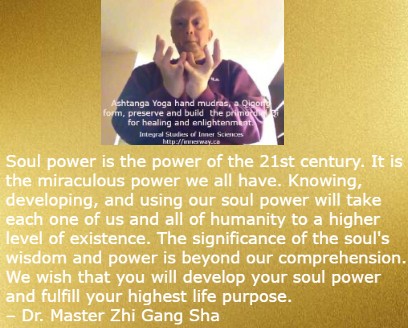 Soul power is developed and used by Tao Healing Hands Practitioner 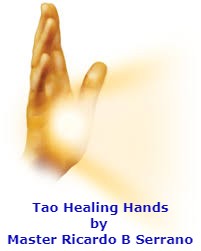
Meditation and Qigong books and DVDs on Functional Medicine Six healing Qigong sounds book at https://www.amazon.com/dp/0988050269 The Meditation and Qigong Mastery book at https://www.amazon.com/dp/0987781901 Return to Oneness with the Tao book at https://www.amazon.com/dp/0987781960 Return to Oneness with Spirit through Pan Gu Shen Gong book at https://www.amazon.com/dp/0987781979 Keys to Healing and Self-Mastery according to the Hathors book at Return to Oneness with Shiva book at Oneness with Shiva book at The Cure & Cause of Cancer book at
To order the Maitreya (Shiva) Shen Gong & Omkabah Heart Lightbody Activation DVDs with shipping, cost $60, with a 2-page Healing Conscious Mind Encodements (pdf) enclosedplease click the Paypal button below:

 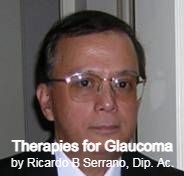 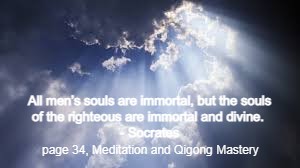 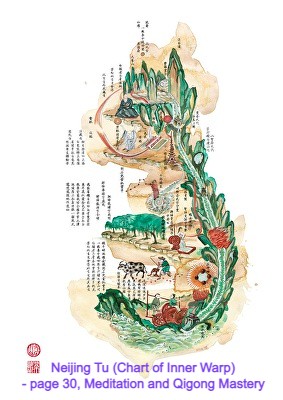   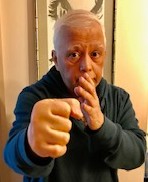 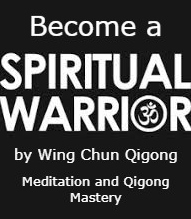 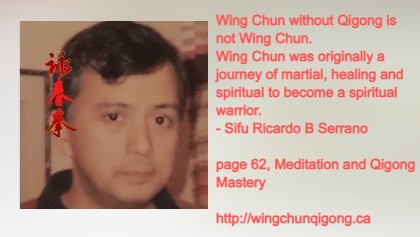 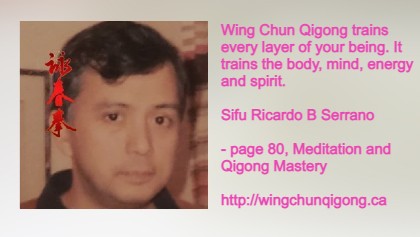  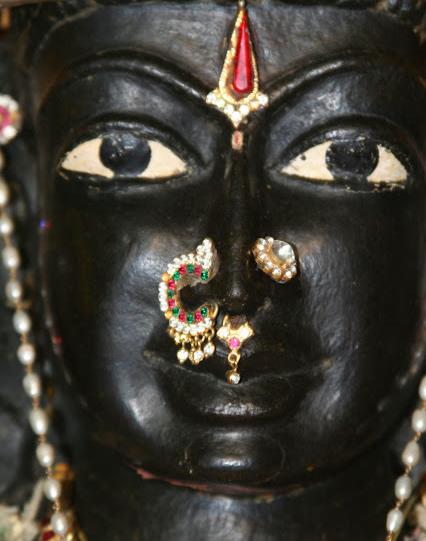 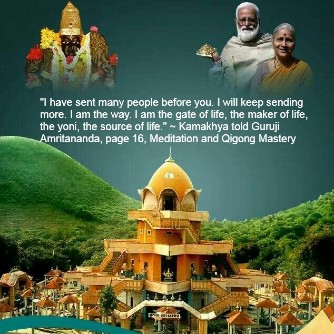 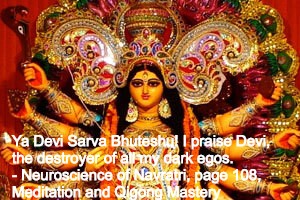  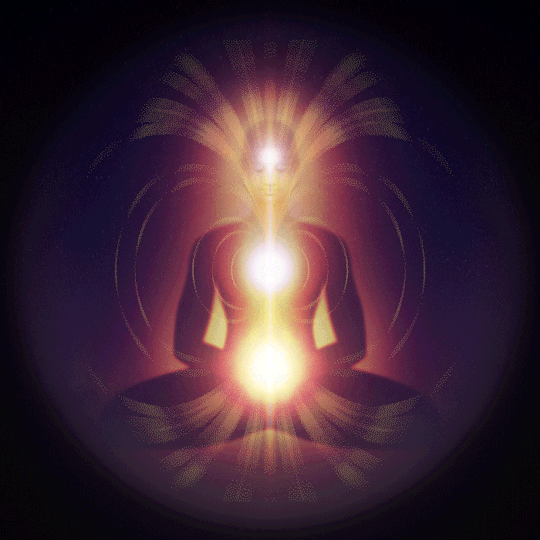   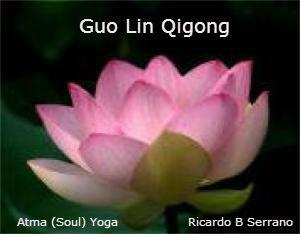  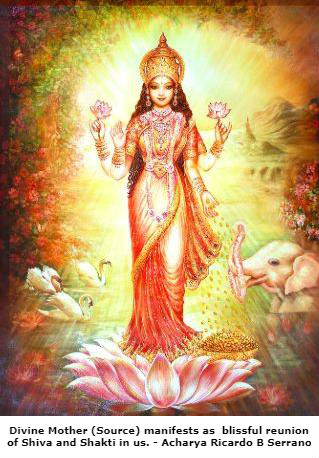  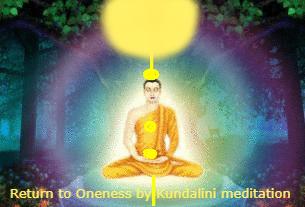  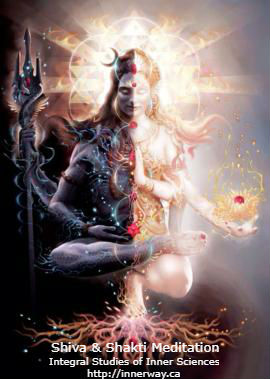 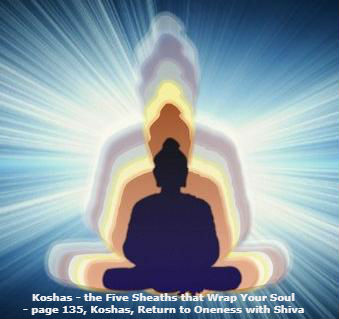 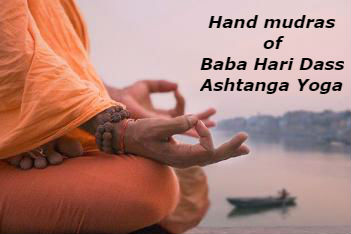 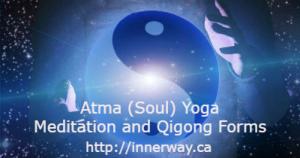

 
 Contact qi-healer@qiwithoutborders.org Updated January 26, 2006 by  |

